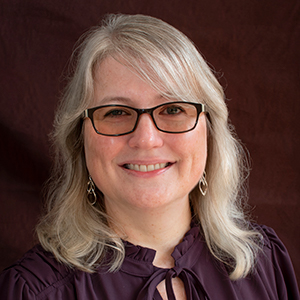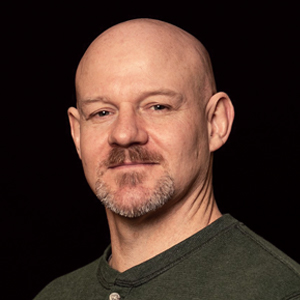What we’ve lost by closing our labs — and what we risk reopening them
When our university campuses closed in March, we realized that, although we can adapt much of our instruction material to deliver it effectively via the web, the medium is wholly different from the classroom and cannot replace what students learn at the bench. The technical skills we teach in a laboratory simply do not translate, and the loss of experimental inquiry inevitably has significant impact to undergraduates, graduate students, postdocs and us, the faculty. All this uncertainty raises many questions, most of which we cannot answer fully at this stage. Scientists are natural planners, and not knowing how to develop a plan is the most frustrating aspect of this shutdown.
In the absence of experiments, scientific skills are abstract. We may be able to teach the concept of how to perform a titration online, but the skill of using a pipette to deliver accurate volumes requires intellectual and muscle memory synergy that can be imprinted only by tactile stimuli. Similarly, though students easily can grasp the concept of aseptic technique for microbiology, the elaborate choreography required to prevent contamination is only learned by doing. How many of us could learn to juggle without rhythmically lofting objects?
Remote work
When in-person instruction and research abruptly ceased in March, Audrey immediately had to adapt two active-learning classes to emergency remote instruction. The first was a 75-student metabolism class for juniors and seniors taught via team problem-solving using white boards. She converted the material to individual problem-solving with flexibility to complete timed exams. While course evaluations indicated this was an acceptable solution, most students said they preferred in-person, team-based instruction. The second, a graduate class on professional development, adapted more readily to remote instruction, as it included outside speakers who already were slated to present remotely. Before the stay-at-home order, the speakers were the only people on a screen, but now everyone participated online.
Graham’s lab scattered to a variety of locations (both nearby and distant from campus) and began working on the backlog of manuscripts. This proved to be a productive period, with six manuscripts prepared. However, two require confirmatory experiments and cannot be submitted until research activity resumes.
Both of us have been helping students prepare dissertations and serving on committees for candidacy exams and dissertation defenses. These exams are now fully online, which can seem impersonal, and explanation of data is limited when a student can’t easily go to the board and show their thinking. We also have been reviewing manuscripts for academic journals, which requires a balancing act when considering the need for additional experiments: We don’t want to hinder progress, yet the science should be solid. With labs closed, requesting additional experiments may slow publication of good work by months or longer.
Our lab members
Our undergrads, living in the petri dish of dorms and community eating (buffets and food courts) were the most likely to spread the disease, not unlike people on cruise ships or in prisons. Therefore, they were evacuated first, leaving our campuses largely empty. Undergraduate researchers in both our labs no longer were able to pursue their projects. For seniors, this meant final experiments were not completed. Continuing undergrads are also unlikely to be able to resume their work safely in the coming semester as rules for reopening labs at both our institutions strictly forbid or severely limit undergraduate researchers. One set of guidelines actually states that the PI is responsible for “communicating expectations for behavior on and off campus” including requiring the student to agree to “Avoid violations of social distancing norms (e.g., attending parties that involve large groups and close contact)” and “Timely disclosure if roommates’ contacts or behaviors increase the risk for exposure.”
The most novice lab members need the closest supervision — they must learn laboratory safety risks — and frequently are not allowed in the lab alone until trained. The new restrictions will prevent individual undergraduates from conducting research and have additional consequences for our disciplines. A student who can’t experience the scientific process directly will have difficulty deciding to pursue higher degrees in the field, and graduate school admissions committees will have even more difficulty assessing the likelihood of success for students without lab experience.
From our perspective as professors, a graduate student may experience little consequence with a one-semester delay; however, this perspective is not shared by the graduate students. The young and ambitious perceive time differently. Nevertheless, all agree that a year or more would impede project progression, particularly for first- and second-year Ph.D. candidates. Graham has a very engaged first-year graduate student who had to halt research activity at this critical stage. After providing instruction on the software the lab uses for analysis, Graham created mock data for the student to analyze. This activity filled eight weeks but now largely is exhausted. We both seek to find constructive ways to maintain involvement with laboratory projects and continue each student’s learning.
We have concerns about the use of funds granted specifically to support the research activities of junior investigators. Both of us employ individuals who oversee many day-to-day laboratory functions and activities. These researchers present a unique set of problems. Once all writing opportunities are exhausted, is it correct and prudent to continue to pay their salaries? Morally, the answer is easy; they should be supported. But what does it mean for productivity within the granting period if universities are less than fully operational in the near term? More importantly, will this limit future employment opportunities of these individuals, lengthen their career progression or both?
The prospect of reopening

Laboratories are hives of activity and interaction and were not designed to be left fallow and empty. Research labs must conduct experiments; the system requires that graduate students and postdocs in biochemistry and molecular biology develop technical skills and perform a body of experimental work. Publications remain the primary currency of the sciences, and we are funded to complete specific objectives. With grants running and experiments designed, we are keen to get back into the lab.
Audrey’s research team has the green light to return to her laboratory, whereas Graham’s is expected to return in a limited capacity in mid-June. However, the two of us are not in the first wave of people allowed to return to campus. Most universities have decided that people who predominantly work in offices (including professors) should continue to work remotely. Audrey is genetically predisposed to lung infections and therefore considered high risk. We have discussed at length the logistics of both conforming to the regulations set by our institutions and defining additional protocols within the lab to minimize the chance of community spread.
Limiting the number of people in the lab will slow productivity. We train our personnel, answer questions and help to solve problems in labs of about 12 people. Having one or two working at a time, with the faculty providing remote, discontinuous and iterative supervision, will be much less efficient. Slow is better than nothing but not what we expect for reasonable productivity.
Labs have thousands of surfaces, many of them touched by all group members and some that cannot easily be sprayed with an alcohol solution without damage (absolutely do not spray the microscope, for example). Reopening will require additional training on COVID-19 transmission and proper use of personal protective gear (to prevent viral spread as opposed to providing experimental safety), establishing calendars to minimize or prevent overlap of personnel in the lab, and new guidelines for sanitizing workspaces between users. We have moved benches and equipment to put greater distance between workspaces. Some labs are installing plastic sheeting between back-to-back benches, akin to the sneeze guards now prevalent at drive-through restaurants and the grocery checkout. Can we be safe in a laboratory without community immunity? Even with all of our efforts to promote safety, we can’t control all outcomes. Our lab colleagues will be at significant risk regardless of what we do to mitigate.
Collaborative work or common instrumentation compounds these dangers. Will that incubator that everyone borrows to grow bacteria become a node for viral transmission? The same is true for shared instruments and spaces such as the nuclear magnetic resonance or mass spectrometry lab or the cold room. Audrey’s team is prioritizing projects that do not require the NMR but instead can be accomplished using equipment within the Lamb lab. Some grad students from other labs use our equipment regularly, and we have included them in the calendaring system as if they were full-time employees to reduce overlap.
The risks will be cumulative as each of us passes from home to work repeatedly. Dangers also exist from and for our home lives. If Audrey’s son rejoins his soccer team on the pitch, will she have to be isolated from him when he returns home? Graham worries about commuting home to Milwaukee, potentially carrying the virus from the higher risk population in Chicago. If he returns to work, should he not travel to see his family?
Social distancing is effective at reshaping the infection curve but, in the absence of a vaccine or a treatment, doesn’t change the area beneath that curve. Avoiding contact with others ensures only that the number infected does not spike and overwhelm our capacity to respond. Obviously, we must all commit to less contact and stringent hygiene, but in doing so we dramatically prolong the threat. So the resumption of scientific activity worldwide appears to be contingent on the development of a vaccine or drug against COVID-19. Without such a remedy, we must weigh the value of our work against the potential cost to health and life.
Enjoy reading ASBMB Today?
Become a member to receive the print edition four times a year and the digital edition monthly.
Learn moreFeatured jobs
from the ASBMB career center
Get the latest from ASBMB Today
Enter your email address, and we’ll send you a weekly email with recent articles, interviews and more.
Latest in Opinions
Opinions highlights or most popular articles

Sketching, scribbling and scicomm
Graduate student Ari Paiz describes how her love of science and art blend to make her an effective science communicator.

Embrace your neurodivergence and flourish in college
This guide offers practical advice on setting yourself up for success — learn how to leverage campus resources, work with professors and embrace your strengths.

Survival tools for a neurodivergent brain in academia
Working in academia is hard, and being neurodivergent makes it harder. Here are a few tools that may help, from a Ph.D. student with ADHD.

Hidden strengths of an autistic scientist
Navigating the world of scientific research as an autistic scientist comes with unique challenges —microaggressions, communication hurdles and the constant pressure to conform to social norms, postbaccalaureate student Taylor Stolberg writes.

Black excellence in biotech: Shaping the future of an industry
This Black History Month, we highlight the impact of DEI initiatives, trailblazing scientists and industry leaders working to create a more inclusive and scientific community. Discover how you can be part of the movement.

Attend ASBMB’s career and education fair
Attending the ASBMB career and education fair is a great way to explore new opportunities, make valuable connections and gain insights into potential career paths.


